I'm Seeing Red!
Over the years I can say that the two favorite colors in Koi to the average American hobbyist are yellow and red. Let’s talk about red and all that goes with it.
I wish I had a nickel for every time a customer came to the farm and said they wanted a “truly” red Koi or one with “red” in it. Firstly, there are many interpretations of what “true” red really is, and I have found that there are as many shades of it as there are opinions on the subject of what is red and what is not.
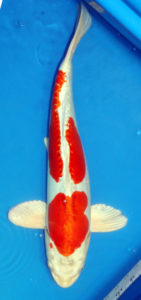
We need to start at the beginning. Most hobbyists do not realize how Koi start in life as compared to how they finish with respect to colors and patterns. Depending on the variety, the changes can be quite extreme and even unbelievable. When speaking of red in particular, no variety that can be red starts as red at a young age. As well, there are many, many factors that play a role in if a fish is red and what shade of red verses orange it may end up. Diet, genetics and many water parameters also play a role in color. The amount and type of minerals in the water are a big factor as well. Even the color of the water the fish lives in is critical.
Kohaku, for example, are the red and white Koi that most people recognize. See the photo below.
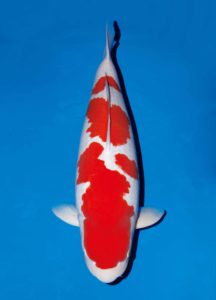
Well, even though they end up as beautifully patterned red or orange and white fish, they all start off in life as what appears to be a solid pale orangey color. At a given point the orange begins to break up and a pattern begins to appear as the white beneath comes to the surface. Here are some Kohaku fry at one moth old and around one inch long.
As you can see the transformation from fry to mature fish is quite extreme.
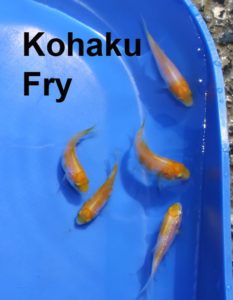
Take Showa as another example. The are probably one variety with the most extreme changes of all the Koi varieties. Here are some Doitsu Showa, and they are the parents of some of the fry in the photos below as well.

Now look at some of the offspring of these same fish at one month old.
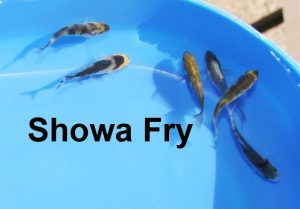
Sanke is another variety that can be red. As you will see, these as well start off in life far different then how they can end up with maturity and proper conditions and diet. Here they are when they are mature.
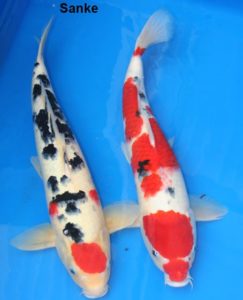
Below are some Sanke fry at one month old. As you can see, there is again a huge difference.
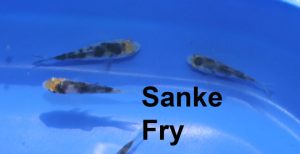
Now below are some Sanke Tosai. These fish are less than but close to one year old. As you can see, one is red and one is orange, but the color difference can be subtle at times. Both of these Sanke will be cherry red when they mature as long as the conditions permit it. The genetics for red are there for sure.
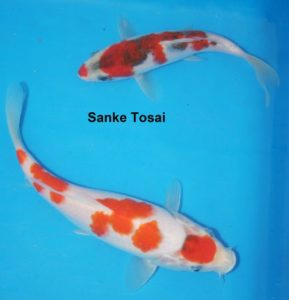
Now here is a metallic variety called a Kujaku. These fish have an iridescent color that can be orange or reddish.
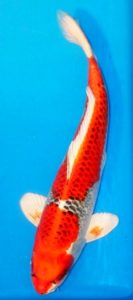
Now look at these Kujaku fry at one month old.
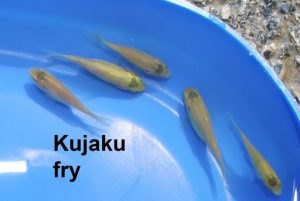
Here you can really see how much they change from fry to adult fish. This is yet another extreme example.
Red is also a very delicate and sometimes unstable color. This is especially true when talking about color enhancing feeds. It is my opinion that if you use color enhancing food for fish that are too young that you can actually destroy their color over the long run. While it is very possible to hurry the orange to red transition along using color feeds on young fish, you are also causing even more instability in the red color. Many times on fish that have been fed color enhanced food while young they will often lose the red color completely as they mature. This happens quite commonly in imported fish. The main reason is that the Japanese and other foreign producers of Koi know that Americans like red and that they are also very impatient. For this reason many foreign breeders feed the young fish very high test color enhanced feeds prior to shipping them to the USA. Some of these feeds contain as much as 14% spirolina, which is a color enhancing algae used in feeds. A normal color enhanced feed may normally contain only about 2% spirolina. So as you can see, the higher percentage is much higher than the norm. In many cases it will absolutely turn orange to red in a short time, but it will also make the red very unstable and weak. As stated, many times it will disappear as the fish grows and matures. So do you want the red now, only to disappear later? ….or do you want the red to come over time and more naturally and remain for a greater portion of the fish’s life?
While I am and have been developing better genetics and creating more naturally red fish at younger ages, I am at the same time not sacrificing stability in that color. There is still only a small percentage of stable red fish when they are still young. So beware of young fish that are too red for their age. If most of the population of a given breeder or retailer’s young fish are too red at too young and age, they may have been fed these high test color enhanced feeds. It’s a gamble to say the least. Be patient and the red will come in time as long as you supply the proper diet and water conditions, and as long as the genetics allow it.
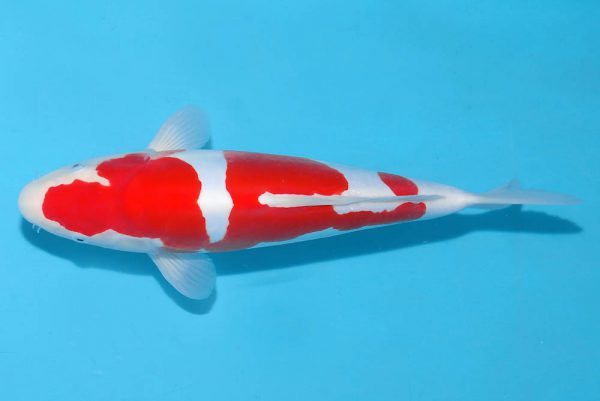
Written by John Fornaro, Hanover Koi Farms. ALL RIGHTS RESERVED BY HANOVER KOI FARMS, COPYRIGHT © 2017